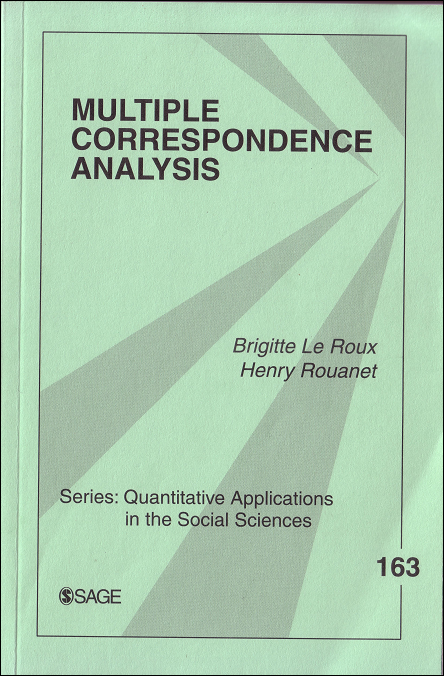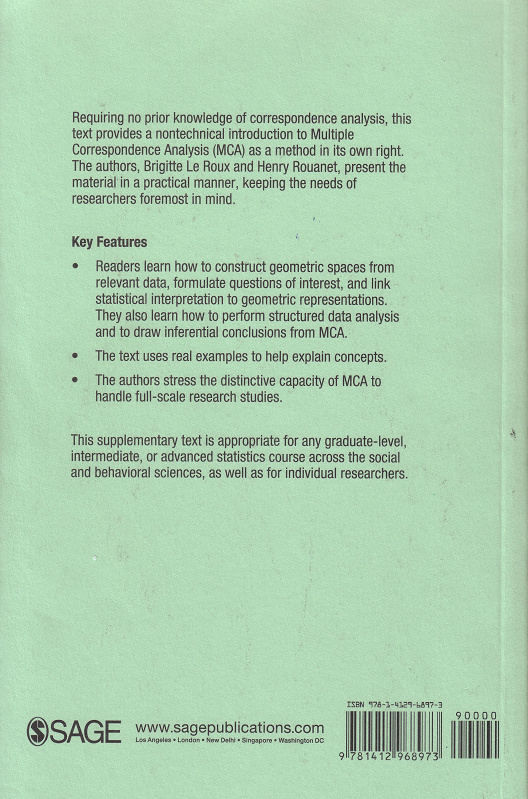 |
Multiple Correspondence Analysis
|
||||||
 |
 |
Table des matières |
||
About the Authors |
vii |
|
Series Editor's Introduction |
viii |
|
Acknowledgements |
x |
|
Chapter 1. Introduction |
1 |
|
1.1 MCA as a Geometric Method |
1 |
|
1.2 Historical Landmarks |
2 |
|
1.3 Bourdieu and Statistical Data Analysis |
4 |
|
1.4 The Taste Example |
5 |
|
1.5 Methodological Points |
10 |
|
1.6 Organization of the Monograph |
12 |
|
Chapter 2. The geometry of a Cloud of Points |
14 |
|
2.1 Basic Geometric Notions |
14 |
|
2.2 Cloud of Points |
16 |
|
2.3 Subclouds and Partitions of a Cloud |
20 |
|
2.4 Contributions |
22 |
|
2.5 Principal Axes of a Cloud |
24 |
|
2.6 From Two-Dimensional to Hogher-Dimensional Clouds |
30 |
|
2.7 Computation Formulas for a weighted Cloud in a Plane |
32 |
|
Chaper 3. The Method of Multiple Correspondence Analysis |
34 |
|
3.1 Principles of MCA |
34 |
|
3.2 MCA of the Taste Example |
46 |
|
3.3 Two Variants of MCA |
61 |
|
Chapter 4. Structures Data Analysis |
68 |
|
4.1 From Supplementary Variables to Structuring Factors |
68 |
|
4.2 From Experimental to Observational Data |
69 |
|
4.3 Concentration Ellipses |
69 |
|
4.4 Taste Example: Study of Gender and Age |
71 |
|
Chapter 5. Inductive Data Analysis |
81 |
|
| 5.1 Typicality Tests | 82 |
|
| 5.2 Homogeneity Tests | 85 |
|
| 5.3 Confidence Ellipses | 89 |
|
| Chapter 6. Full-Scale TResearch Studies | 91 |
|
| 6.1 The Field of Püblishers in France | 91 |
|
| 6.2 The Norwegian Fiel of Power | 97 |
|
| Appendix | 103 |
|
| References | 110 |
|
| Index | 113 |
|